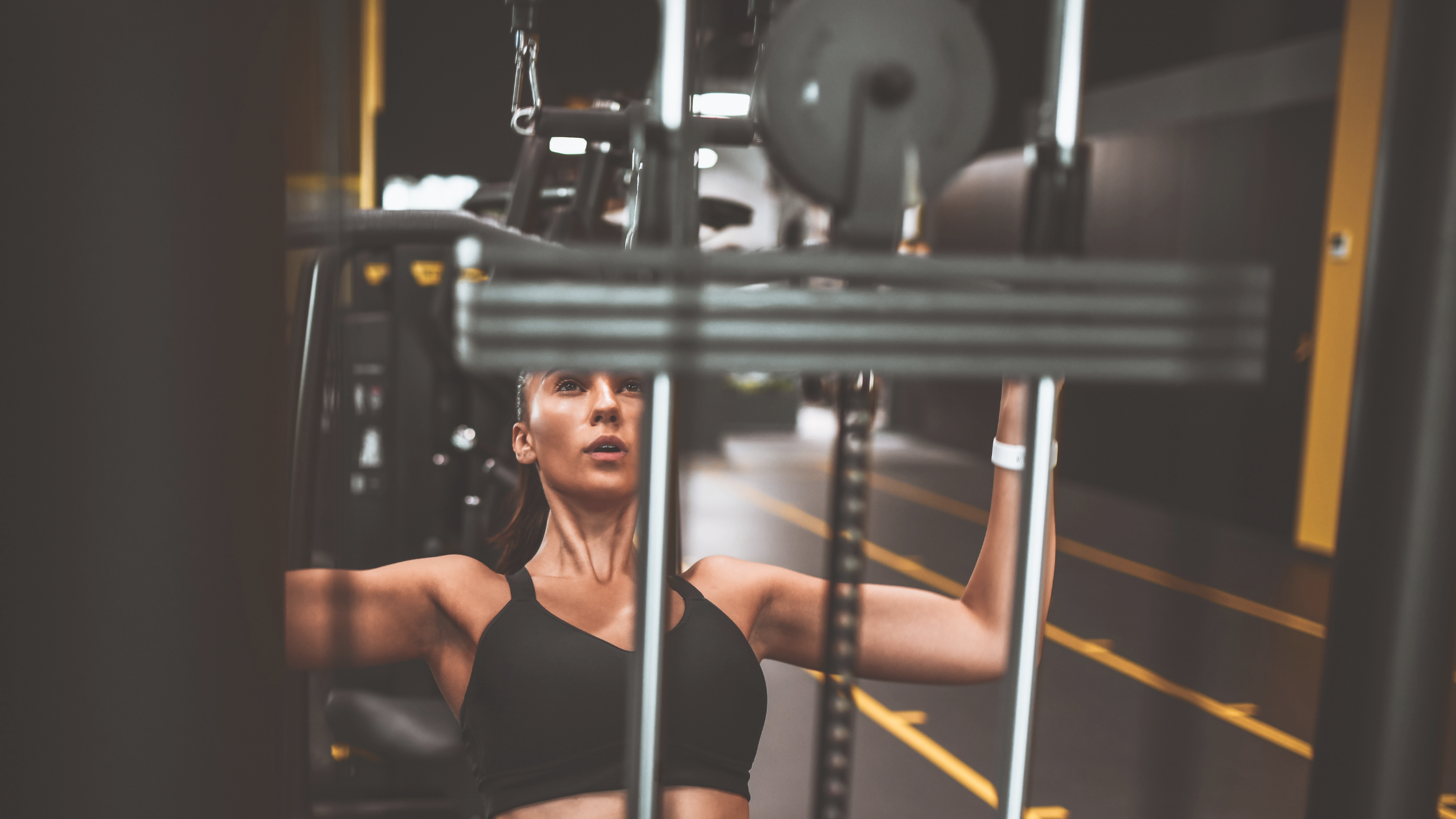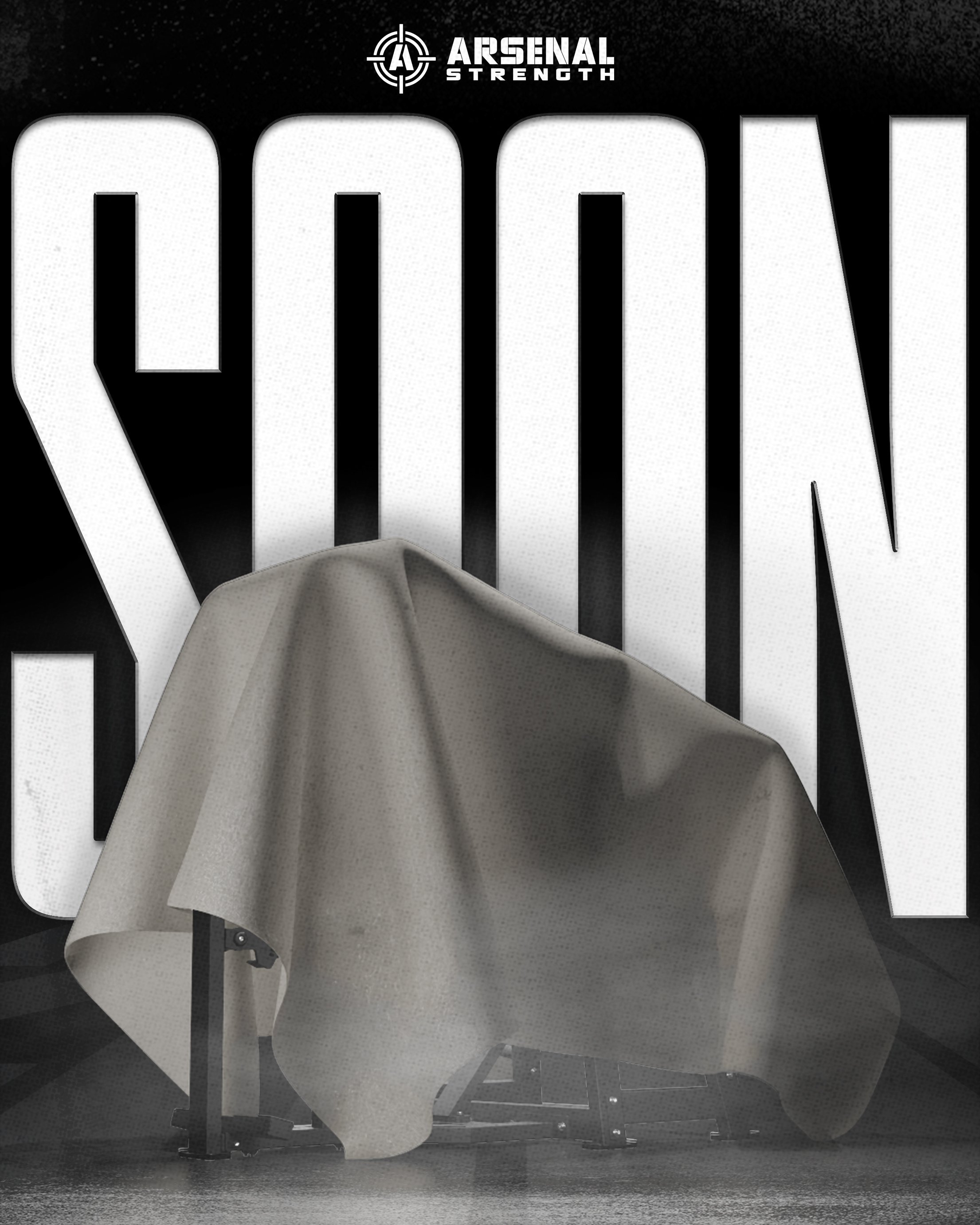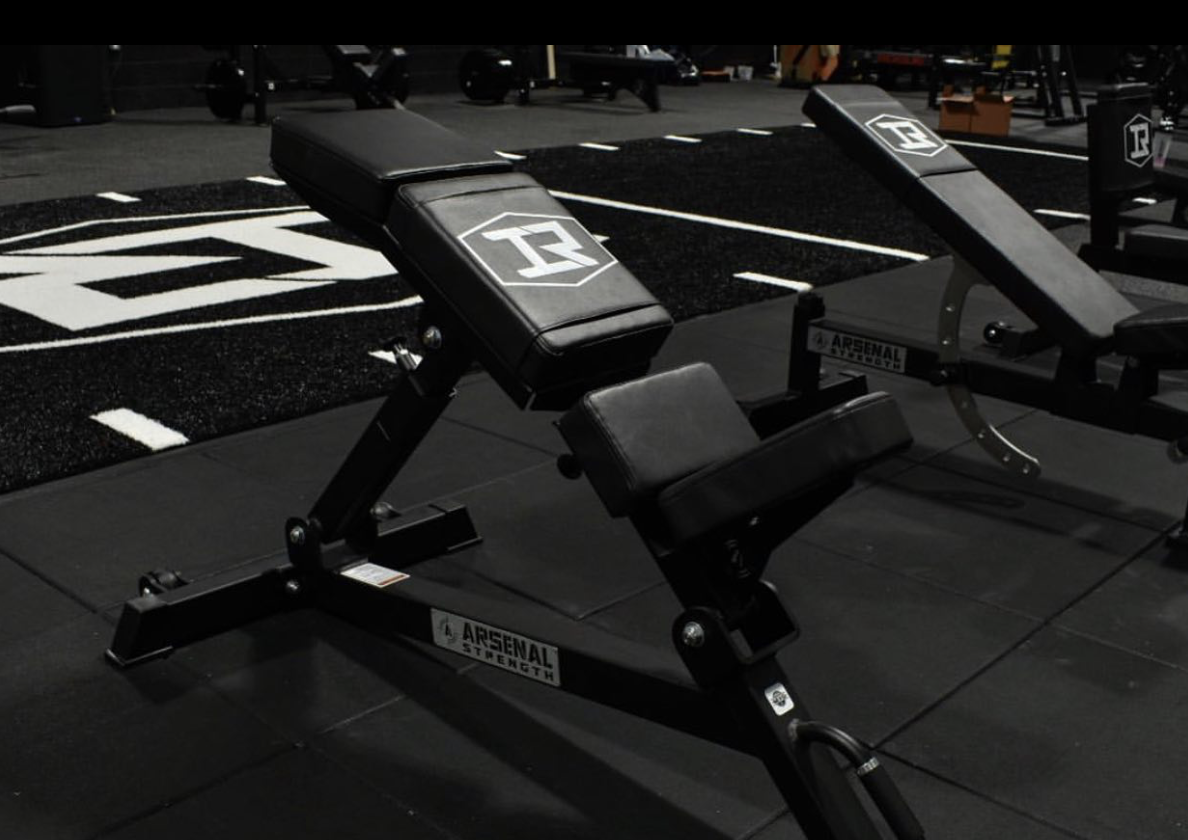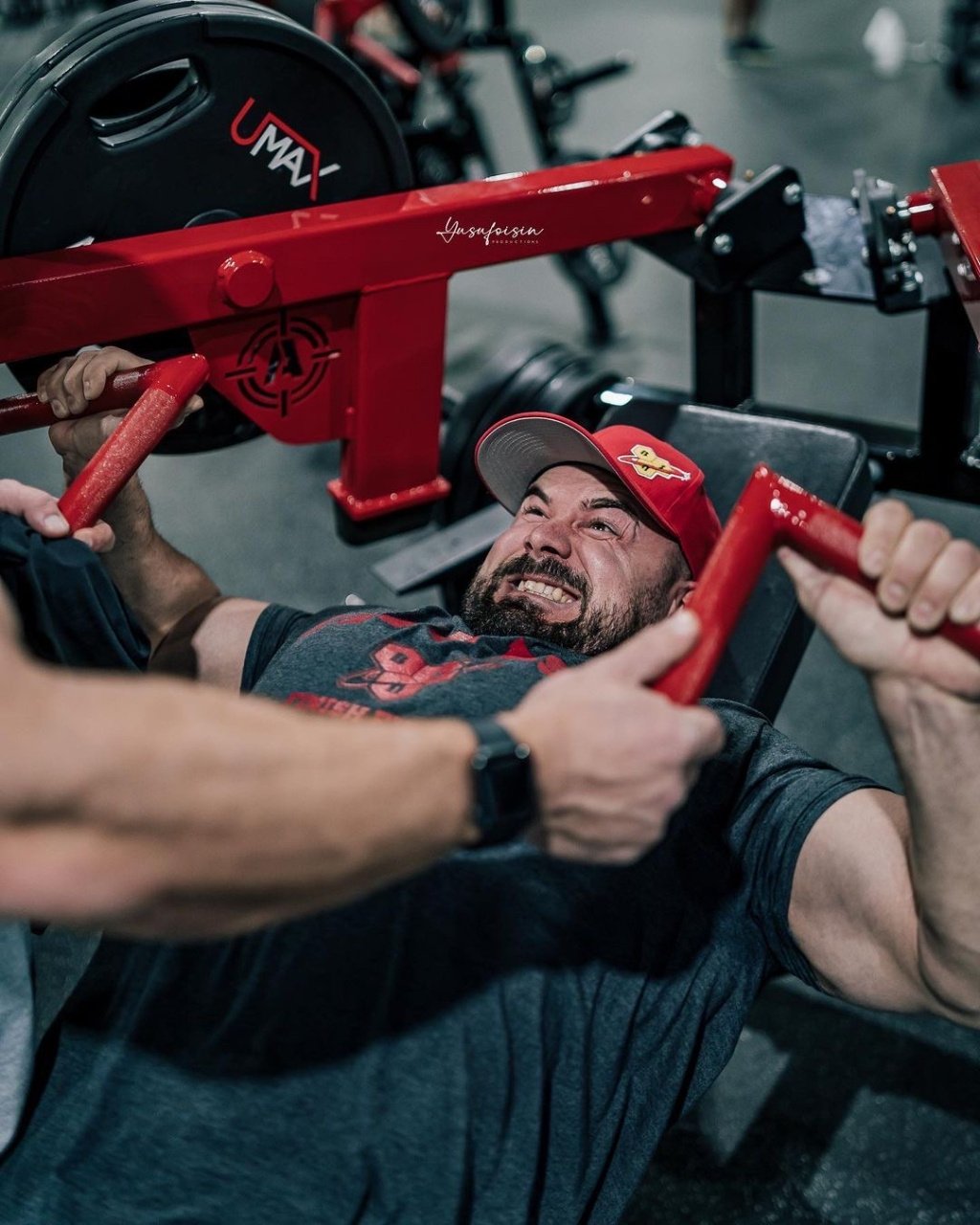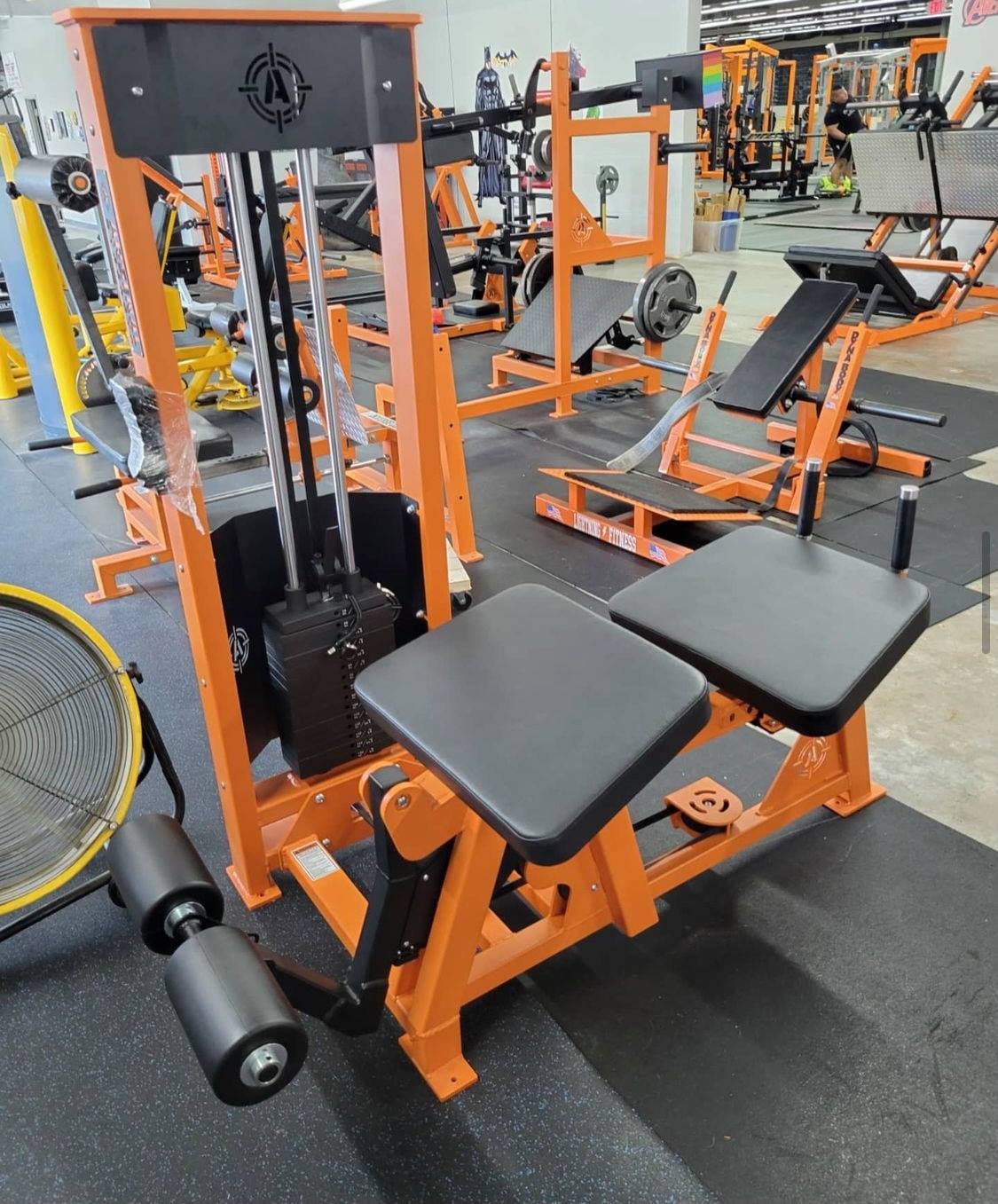Maximize Your Lat Pulldown Workout Gains
8 Effective Pull Down Workout Moves for a Sculpted Back
Looking to enhance your back with a lat pull down workout? Find out how to strengthen your latissimus dorsi and elevate your routine with 8 straightforward exercises. From improving posture to achieving muscle balance, we cut to the chase with practical advice that translates to real results. Expect thorough guides on technique, variations to keep your workouts fresh, and actionable tips without the fluff.
- Pull down workouts strengthen major back muscles, notably the latissimus dorsi, improve posture, and provide a foundation for advanced exercises like chin-ups and pull-ups.
- Lat pulldown machines offer a safe, controlled environment for back workouts, engage multiple muscle groups, and allow various attachments for diverse exercises.
- Variations of pull down exercises target different muscle groups and incorporate core stability, which is vital for achieving a fully developed and balanced musculature.
See the Arsenal Strength ISO Lat Pulldown Machine in Action: https://www.youtube.com/watch?v=jDUibQcjOzI
The Power of Pull Down Workouts
Pull down exercises are highly regarded in numerous fitness programs due to their comprehensive benefits, which have made them popular with both exercise enthusiasts and professional instructors. These workouts enhance posture, bolster back strength, and improve muscle sculpting. They especially fortify the latissimus dorsi muscles, supporting upright posture and spinal stability that are vital for maintaining a healthy back.
When you incorporate pull downs into your routine:
- You develop a more robust and dense back musculature which can alleviate pain and discomfort while helping to straighten out your stance.
- This type of workout serves as an essential foundation for advancing towards performing chin-ups and pull-ups by also involving the biceps during these movements.
- Engaging in Single-Arm Pulldowns specifically targets strengthening the back and stabilizing it more evenly across both sides of the body thereby mitigating muscular imbalances.
Muscles Targeted in Pull Down Workouts
Workouts that involve pulling down predominantly activate the latissimus dorsi or "lats", which are the back’s largest muscles. These exercises also work on other key muscle groups such as the teres major and rhomboids that play a vital role in stabilizing the shoulder.
When performing pull down routines, not only do they focus on primary muscle groups, but they incidentally recruit secondary muscles including:
- biceps
- triceps
- shoulders
- upper back
- abs
- obliques
It is essential to strengthen the latissimus dorsi for maintaining proper posture and providing stability to the upper body while simultaneously minimizing injury risks within the rotator cuff muscle group.
Advantages of Using a Lat Pulldown Machine
With a lat pulldown bar affixed, the lat pulldown machine serves as an efficient piece of equipment for training several muscle clusters which encompass:
- The back
- Shoulders
- Arms
- Core muscles
Its design ensures not only user convenience but also emphasizes safe exercise practices.
Executing pulldowns with deliberate slowness and precision on this apparatus helps curb the temptation to rely on momentum. This practice enhances muscle activation while fostering safer workouts. The adaptability of the lap pulldown machine is noteworthy due to its compatibility with various attachments that accommodate diverse workout requirements.
Classic Lat Pulldown: The Foundation
The foundational exercise for all pull down variations is the classic lat pulldown, which predominantly targets the muscles of the latissimus dorsi and teres major. To carry out this movement properly:
- Position yourself by sitting and locking your knees under the pad.
- Grasp the bar with an overhand grip and draw it down to just below chin level.
- Throughout each repetition, maintain elevated shoulders and a puffed chest.
It’s crucial to control motion when you gently return to your starting position. Doing so ensures that you are effectively engaging with those muscles intended for development through this essential exercise structure on which other pull-down derivatives are based.
Tips for Proper Execution
To reap the full benefits of the lat pulldown while avoiding injury, it is critical to perform this exercise with correct technique. This entails keeping your back straight, chest proud, and maintaining a neutral spine position when using the lat puldown machine. To facilitate an efficient pull motion on the machine, set up the knee pad so that your knees form a right angle.
Ensuring core activation throughout each phase of movement is vital for stability and safeguarding your lower back as well. Inhale before you begin pulling down and exhale during the descent of the bar to naturally engage your core muscles which supports proper posture maintenance. Keeping body momentum at bay is crucial. Refrain from using swinging motions with your torso in order to concentrate work on targeted muscle groups during execution of this exercise.
Common Mistakes to Avoid
When executing the traditional lat pulldown exercise, it’s crucial to avoid certain prevalent errors. A typical error includes excessively arching your back while performing the movement. To protect your lower back and achieve the slight backward lean that is necessary for moving the bar past your chin without contact, it’s important to keep a neutral spine.
It’s essential to select an appropriate grip width in order to minimize undue stress on the shoulders while promoting correct shoulder mechanics and optimal engagement of the latissimus dorsi muscles. Avoid quick, momentum-driven movements. Instead opt for a steady lowering phase which helps reduce the risk of injury and ensures proper muscle activation without changing the intended angle of exertion.
By maintaining control over every aspect of this motion, you help safeguard against putting too much strain on your back or suffering from potential injuries—this attention guarantees purposeful execution focused on muscular development.
Expanding Your Workout: 7 Pull Down Variations
Incorporating diversity in your exercise regimen is essential for stimulating muscle growth and enhancing strength by targeting muscles from various angles. Utilizing different grips during a lat pulldown, like the wide grip or close grip, can more specifically engage distinct muscle sets. Employing varying attachments such as a straight bar or tricep rope can offer new challenges and stimuli within a lat pulldown workout.
There exists an array of pull-down variations that contribute unique advantages to the development of back muscles through engaging diverse muscle groups and necessitating core stability. Here are seven distinctive variations:
- Lat pulldown with an underhand grip
- V-bar pulldown
- Single-arm pulldown
- Pulldowns executed with straight arms
- Close-grip variation of the lat pull down
- Standing version of the “lat” pushdown.
- Cable face pulls
Underhand Grip Lat Pulldown
Employing the underhand grip on a lat pulldown exercise particularly emphasizes engagement of both lower lats and biceps for targeted muscle development. Here is how to perform this variation properly:
- Position yourself by sitting and securing your thighs underneath the pads.
- With an underhand grasp narrower than shoulder width, take hold of the bar.
- Engage your back muscles fully.
- Pull down towards mid-chest in a controlled motion.
- Gradually return to the initial position.
This alternative approach to performing a traditional lat pulldown concentrates more intensively on strengthening not only the inferior segment of your latissimus dorsi but also enhances activation in your biceps and forearms during the movement.
V-Bar Pulldown
Utilizing a V-Bar for pulldowns is an outstanding alternative that diminishes the strain on your shoulders when contrasted with pull-downs executed with a wide, overhand grip. This exercise employs a neutral grip and focuses on various muscle groups such as the lats, shoulders, and mid-back.
By offering an alternate angle of resistance, the V-Bar Pulldown distinguishes itself in how it activates the muscles distinctively. Grasping these nuanced differences in workout variations can significantly improve the effectiveness of your training results.
Single-Arm Pulldown
The single-arm pulldown fosters symmetric growth and bolsters the connection between mind and muscle. This one-sided exercise guarantees that each side of the body gains strength and develops uniformly.
Utilizing a stirrup handle attachment or a single-hand pulley setup is advisable for executing this workout. Concentrating on individual arms sequentially, it becomes possible to intensify the engagement with your muscles mentally while more precisely targeting specific muscle groups, thereby achieving superior outcomes.
Straight Arm Pulldown
The straight arm lat pulldown zeroes in on the back muscles by converting what’s typically a multi-joint exercise into one that moves solely at the shoulder joint, effectively targeting the lats.
For bodybuilders striving to improve their ‘V-taper’ and strength athletes concerned with joint health and rectifying muscle disparities, this movement is highly advantageous. Performing Straight Arm Pulldowns with extended arms can serve as an effective warm-up to awaken the lats. This not only enhances shoulder stability but also boosts performance in more complex lifting exercises.
Close-Grip Pulldown
Executing a Close-Grip Pulldown entails drawing a handle, connected to a cable system, down toward the upper chest. This movement is enhanced by adopting a close grip, which can increase the range of motion and may lead to more effective engagement of muscles in the upper back than with wider grips.
Focusing primarily on stimulating the latissimus dorsi, this exercise also recruits mid-back muscles as well as biceps. To perform the Close-Grip Pulldown correctly, one must keep an upright posture without any arching in the back while ensuring that they pull towards their upper chest rather than towards their abdomen.
Standing Lat Pulldown
Another intriguing variation is the standing lat pulldown, which requires constant engagement of the core muscles to stabilize the midsection and keep proper posture.
Adjusting foot placement while performing a standing leg pulldown brings numerous advantages.
- It makes it possible to alter how challenging the exercise is
- The pulling angle changes, providing a distinct alternative from conventional seated methods
- The workout becomes more of an interesting challenge
- Core muscle activation increases.
Cable Face Pull
The Cable Face Pull exercise is an effective way to engage the shoulder and rear delt muscles, playing a crucial role in enhancing posture and fortifying the upper back. This particular variation of the exercise changes the pull angle, emphasizing strengthening of both rear deltoids and upper back muscles.
Adding Cable Faces. Pulls into your workout regimen, particularly during your pull-down exercises, can significantly boost shoulder stability while promoting better posture. It’s highly recommended for those aiming to reinforce their shoulder and upper back muscle groups as part of their overall fitness routine.
Integrating Pull Down Workouts into Your Routine
In an upper/lower 4-day split workout routine, lat pull downs are commonly featured on the day dedicated to the upper body. It’s customary for these exercises to be arranged towards the conclusion of a session and performed within rep ranges that span from 8-15 reps.
Adding lat pull down exercises to your workout can significantly boost both muscle definition and back strength. Thus, they represent an excellent exercise choice for fitness enthusiasts at any level – from those just starting out to seasoned lifters seeking value in their training program.
Beginner's Guide
If you are new to exercising, it’s wise to initiate your training with modest weights or resistance bands. This approach minimizes the risk of injuries and affords you the opportunity to concentrate on mastering proper technique. Ensuring correct form during the pulldown exercises is essential both for safeguarding yourself from harm and for successfully activating the intended muscles.
For those who are just starting out, it is advisable to undertake two sets consisting of 12 repetitions each when using a lat pulldown machine. It’s best practice to take brief pauses lasting merely 10 seconds between these sets. Adhering to this simple regimen will aid in developing both strength and comfort with the exercise, which paves the way toward progressing into more complex workout techniques in time.
Advanced Techniques
Experienced weightlifters can stimulate additional muscle growth by adding drop sets to their lat pulldown routines, completing a set until they can’t perform any more reps (failure), then lowering the weight and executing more repetitions to failure once again.
For those looking to intensify their training sessions. One effective strategy is to implement supersets. This involves carrying out a series of lat pulldowns and immediately following them with an alternate exercise without taking any break in between, which promotes increased muscle tension and development.
To enhance focus on each side of the back independently, advanced practitioners might incorporate unilateral lat pulldown exercises into their regimen. Doing so helps reinforce the mind-muscle link while providing comprehensive muscular sculpting of the back when combined with bilateral movements.
Frequently Asked Questions
What does lat pulldown target?
Primarily engaging the latissimus dorsi muscles, commonly referred to as the “lats,” the lat pulldown exercise also activates the teres major muscle located at the lower end of your shoulder blade. It’s an effective workout for enhancing back muscular strength and elevating upper body power.
View this video about shoulder workouts: https://www.youtube.com/watch?v=O81g5oNMni8&list=PLiwhmu8KWlGyLbDnF0IUubl8ppCxAGKhH&index=12
Should I lean back during lat pulldown?
Indeed, for an effective lat pulldown exercise, it is advisable to recline subtly at an angle not exceeding 30 degrees while utilizing your legs as a base of support and ensuring that your head remains in line with your spine. This posture helps sustain proper form and enhances the efficiency of the workout.
Do pull downs work your chest?
Pull downs mainly engage the muscles involved in “pulling” actions, specifically the latissimus dorsi or lats as well as the biceps, rather than targeting the chest. The primary muscle at work here is indeed the latissimus dorsi.
Can I use different grips during lat pulldown exercises?
Yes, you can use different grips like wider, narrow, underhand, or overhand to target specific muscle groups during the pulldown exercises. It may not significantly alter the exercise’s effectiveness on the lat muscles.
Maximize Your Gains
To sum up, workouts that involve pulling down are beneficial in numerous ways—they can lead to better posture, bolstered back strength, and more defined muscles. The fundamental lat pulldown exercise lays the groundwork for several variations of pull downs designed to engage various muscles and foster comprehensive development of the back.
No matter where you stand on your fitness journey, adding pull down exercises to your regimen is likely to profoundly boost both the strength and sculpting of your back muscles. So go ahead—embrace these exercises and start working towards a stronger, well-defined back through powerful pulls!
Additional Gym Equipment Resources:
Training Shoulders: https://www.youtube.com/watch?v=naNbTZv8hYM&list=PLiwhmu8KWlGyLbDnF0IUubl8ppCxAGKhH&index=14
Flex Lewis for chest exercises: https://www.youtube.com/watch?v=-RQyKQwV9oE&list=PLiwhmu8KWlGyLbDnF0IUubl8ppCxAGKh
Chest training: https://www.youtube.com/watch?v=by61S0p3ofo&list=PLiwhmu8KWlGyLbDnF0IUubl8ppCxAGKhH&index=6

